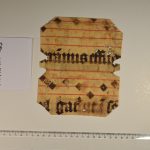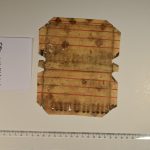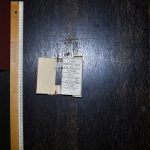The fragment of the late 15-century Sequentionale Varadinense (Várad = Varadinum = Oradea in present-day Romania) was found in 2018 in the Collection of Manuscripts and Rare Books of the Budapest University Library together with other notated manuscript fragments detached and stored in separate boxes. The original carrier book of the fragment was identified in December 2022: Cor Amoris Dei, the work of the popular Jesuit author János Nádasi, published 1675 by Jacob Kürner in Vienna. The carrier still contains small pieces of parchment of the Várad fragment and the small cuts of the spine also refer to the original manuscript binding. The liturgical content of the fragment justifies our opinion of the Bohemian shaped content of the Várad Sequentiary: the fragment contains parts of the sequence of St. Procopius, transmitted exclusively in Bohemian sources. More to the reconstruction of the sequence repertory of the Várad manuscript see Zsuzsa Czagány, „Kyriale és szekvencionále: A váradi kódexcsalád két töredékcsoportjának elemzése” [Kyriale and Sequentionale. Analysis of two fragment groups of the Várad codex family]. In: Fanni Hende, Klára Kisdi, Ágnes Korondi (ed.), „Mestereknek gyengyének.” Ünnepi kötet Madas Edit hetvenedik születésnapjára [Essays in honour of Edit Madas on her 70th birthday]. Budapest: Országos Széchényi Könyvtár, Szent István Társulat, 2020, 443–463.
Zsuzsa Czagány






